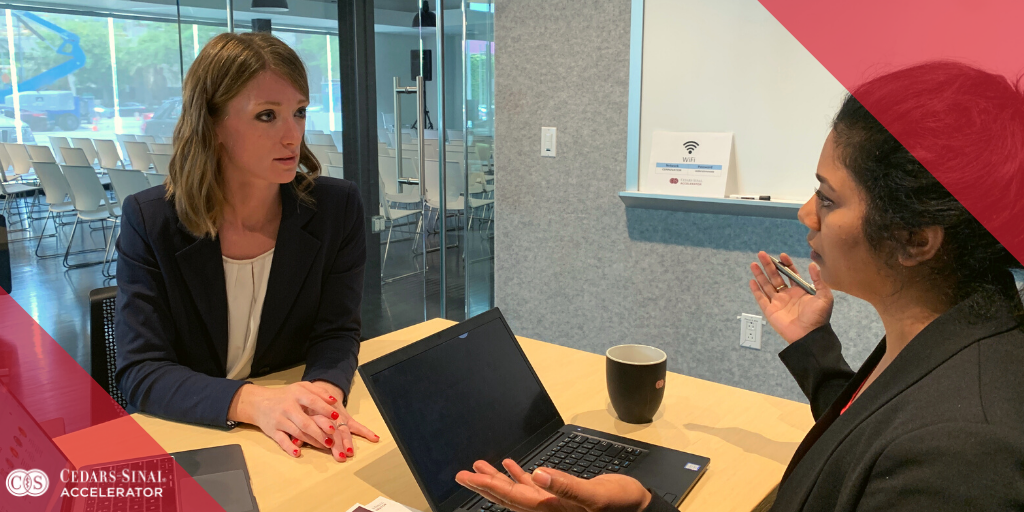Cedars-Sinai Medical Center in Los Angeles has teamed up with a startup accelerator to provide a boost to firms developing new products for the health care field.
A key idea behind the effort is that providing access to medical and other experts who can give an invention a test run can make the difference between failure and success.
The program, which Cedars recently launched with the global startup accelerator Techstars, runs for three months.
The partnership invests $120,000 in each company chosen to participate, and provides work space in a lab across the street from Cedars. The goal is to help the startups fast-track their products into the marketplace.
Cedars and Techstars selected 11 firms for the initial three-month program after sifting through 500 applications, says Omkar Kulkarni, the hospital's point man for the project.
"In those three months we surrounded them with mentors," he says. The mentors include "about 500 people from Cedars-Sinai, from local hospitals, from the investment community, other startup communities."
The firms in the program "learned whether or not their product was a fit for the health care market," Kulkarni says. "We really had a chance to closely work with these companies to build and pilot technologies that would otherwise have been really difficult for these companies to do in such a short period."
The initiative's first class of health care entrepreneurs graduated last week. On graduation day, each company demonstrated its product for an audience of potential investors.
Among the 11 new products: virtual reality goggles that immerse patients in calming scenes of beauty as a drug-free way to manage pain; an inexpensive endoscope designed to eliminate the risk of infection because it’s disposable after one use, and a secure text messaging system that allows patients to set up appointments and communicate with their health providers.
The second crop of startups will go through the program early next year, says Kulkarni.


















